When it comes to painting surfaces that endure heavy traffic, constant use, or high levels of wear and tear, selecting the right paint is critical. Whether it’s your walls, floors, or furniture, you want a finish that not only looks great but can also withstand the everyday hustle. For these situations, scuff-resistant paint becomes a game changer. But what exactly is scuff-resistant paint, and how can you choose the best option for your needs?
This blog post will cover everything you need to know about scuff-resistant paint, including what it is, how it works, and the best types of paint to use for different applications. We will also answer seven frequently asked questions to ensure you make the best decision when choosing scuff-resistant paint.
What is Scuff Resistant Paint?
Scuff-resistant paint is specifically formulated to prevent marks, scratches, and scuffing caused by friction. It is ideal for high-traffic areas where surfaces are constantly being rubbed, bumped, or scraped. Whether it’s your walls, trim, doors, or furniture, scuff-resistant paint protects the painted surface by providing an extra layer of durability and resilience.
Scuffing occurs when something like shoes, furniture, or hands come into contact with the painted surface. With regular paint, this results in unsightly marks that are hard to remove. Scuff-resistant paint, on the other hand, is designed to resist these scuff marks, keeping surfaces looking fresh and clean for longer.
Why Choose Scuff Resistant Paint?
There are several benefits to using scuff-resistant paint for your home or office. Let’s take a closer look at why this type of paint is a great investment:
- Long-Lasting Durability: Scuff-resistant paint has been formulated to endure high levels of wear and tear. It can stand up to frequent cleaning and handling, making it ideal for surfaces that see heavy use.
- Low Maintenance: Surfaces painted with scuff-resistant coatings are easier to clean and maintain. You won’t need to worry about scrubbing away scuff marks or repainting surfaces frequently, saving both time and money.
- Ideal for High-Traffic Areas: If you’re painting walls, doors, or furniture in areas of your home that see a lot of foot traffic—like hallways, entryways, and living rooms scuff-resistant paint helps keep these surfaces looking new longer.
- Protects Surfaces: Scuff-resistant paint adds a protective barrier that prevents damage from dirt, grime, and other abrasive materials. This is particularly important in spaces like kitchens, bathrooms, and entryways.
- Aesthetic Appeal: In addition to being durable, scuff-resistant paints come in a range of finishes and colors, so you can achieve both functionality and style for your space.
Types of Scuff-Resistant Paint
There are a variety of scuff-resistant paints available in the market. Choosing the right one depends on the surface you’re painting and the specific needs of the area. Let’s explore some of the best types of scuff-resistant paint and their uses:
1. Eggshell Finish Paint
Eggshell finish paint strikes a perfect balance between matte and glossy, providing a subtle sheen that is easy to clean without showing every imperfection. It’s a popular choice for interior walls, especially in high-traffic areas, as it resists scuffing better than flat paint.
- Best For: Walls, trim, and ceilings.
- Features: Low sheen, easy to clean, excellent durability.
2. Satin Finish Paint
Satin finish is another popular option that provides a soft sheen and a higher level of scuff resistance than eggshell. The added gloss helps prevent scuff marks from setting in, making it an ideal choice for areas that experience frequent touch-ups, such as hallways and kitchens.
- Best For: Hallways, kitchens, bathrooms, and doors.
- Features: Smooth finish, higher durability, and good resistance to scuffing and stains.
3. Semi-Gloss Finish Paint
Semi-gloss paint provides a higher sheen and more scuff resistance than satin or eggshell. The glossy finish makes it extremely easy to clean, which is why it’s frequently used on trim, doors, and cabinets.
- Best For: Trim, doors, and cabinetry.
- Features: High durability, resistant to scuffs and stains, and easy to clean.
4. High-Performance Paints (Commercial Grade)
For areas with extreme wear and tear, such as floors, commercial spaces, and heavy-use furniture, high-performance scuff-resistant paints offer superior durability. These paints are formulated to withstand harsh conditions and heavy foot traffic, while still providing a smooth, attractive finish.
- Best For: Floors, commercial spaces, and high-use furniture.
- Features: Ultra-durable, resistant to abrasions, dirt, and scuff marks.
5. Acrylic Enamel Paint
Acrylic enamel paint is often used for metal and wood surfaces, as it provides excellent durability and scuff resistance. This type of paint is quick-drying, water-resistant, and easy to maintain, making it a great option for trim, doors, and outdoor furniture.
- Best For: Metal and wood surfaces, trim, doors, and furniture.
- Features: Quick-drying, resistant to abrasion, easy to clean.
How to Apply Scuff-Resistant Paint
Applying scuff-resistant paint is similar to applying regular paint, but there are a few key steps to ensure that the finish is durable and smooth. Here’s how to go about it:
1. Preparation is Key
Before applying any paint, it’s important to prepare the surface properly. Clean the area thoroughly, removing dirt, dust, and grease. Use a mild detergent and water to wash the surface, and allow it to dry completely before painting. For glossy surfaces, lightly sand the area to help the paint adhere better.
2. Prime the Surface
If you’re painting a new surface or one that has been previously painted, it’s essential to apply a primer. Priming helps the paint stick to the surface and provides a more even finish. For areas that will see a lot of use, consider using a bonding primer for better durability.
3. Choose the Right Tools
Use a high-quality paintbrush or roller to apply the scuff-resistant paint. A roller is generally preferred for larger surfaces, while a brush is ideal for detailed areas like trim or corners.
4. Apply the Paint
Apply the scuff-resistant paint in thin, even layers. Avoid applying a thick coat of paint, as this can lead to uneven drying and an inconsistent finish. Allow each layer to dry before applying the next, ensuring that the paint adheres properly.
5. Let it Cure
Once you’ve finished applying the final coat, allow the paint to cure completely. Depending on the type of paint, this could take anywhere from 24 to 72 hours. Don’t rush the curing process, as the paint needs time to fully harden and develop its scuff-resistant properties.
Best Scuff-Resistant Paints: Our Top Picks
Here are some of the best scuff-resistant paints on the market that deliver durability, long-lasting protection, and an attractive finish:
1. Benjamin Moore Regal Select Interior Paint (Eggshell)
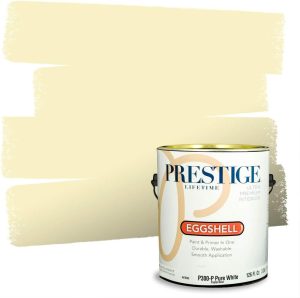
Benjamin Moore is known for its high-quality paints, and the Regal Select series is no exception. This paint is highly durable, resistant to scuffs, and offers easy cleaning. It’s an excellent choice for interior walls, especially in high-traffic areas.
- Pros: Durable, easy to clean, low VOCs.
- Cons: Higher price point.
2. Sherwin-Williams Emerald Interior Acrylic Latex Paint (Satin)
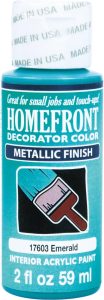
Sherwin-Williams Emerald is a high-performance paint that combines excellent scuff resistance with great coverage. Its satin finish is perfect for areas that require frequent cleaning and protection against scuff marks.
- Pros: Scuff-resistant, mildew-resistant, low VOC.
- Cons: Expensive.
3. Behr Premium Plus Ultra Interior Paint (Satin)
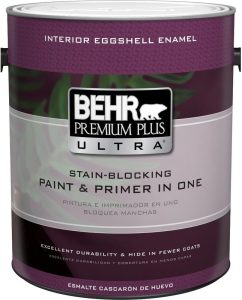
Behr’s Premium Plus Ultra series offers great value without sacrificing performance. This paint is resistant to scuffing and stains, making it a great choice for busy areas like hallways and kitchens.
- Pros: Affordable, good coverage, stain-resistant.
- Cons: May require multiple coats.
4. Rust-Oleum Painters Touch Ultra Cover (Semi-Gloss)
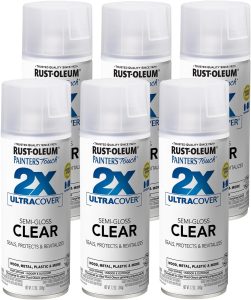
Rust-Oleum’s ultra-cover paint is perfect for both metal and wood surfaces. It provides a semi-gloss finish that’s scuff-resistant, making it ideal for doors, trim, and furniture.
- Pros: Affordable, quick-drying, easy to apply.
- Cons: Limited finish options.
5. Zinsser Perma-White (Satin)
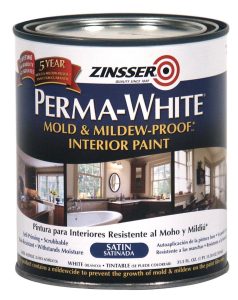
Zinsser’s Perma-White is a mold and mildew-resistant paint that’s ideal for high-moisture areas like bathrooms and kitchens. It’s also scuff-resistant, ensuring that your painted surfaces stay pristine.
- Pros: Mold and mildew resistant, easy to apply.
- Cons: Limited color options.
Frequently Asked Questions
1. What makes scuff-resistant paint different from regular paint?
Scuff-resistant paint is specially formulated with extra durability to resist scuff marks, scratches, and stains caused by everyday wear and tear. It is ideal for high-traffic areas where surfaces are frequently touched or rubbed.
2. Can scuff-resistant paint be used on floors?
Yes, some types of scuff-resistant paint are specifically designed for floors, including high-performance acrylics and commercial-grade coatings. These paints can withstand foot traffic and resist damage from furniture or shoes.
3. Is scuff-resistant paint easy to apply?
Scuff-resistant paint is applied just like regular paint, but you’ll need to ensure the surface is properly prepped and primed. Follow the manufacturer’s instructions for best results.
4. How long does scuff-resistant paint last?
Scuff-resistant paint is designed to be long-lasting, but the duration depends on factors like the type of paint, how much traffic the area receives, and how well the paint is maintained. Generally, it can last several years.
5. Can I use scuff-resistant paint in a bathroom or kitchen?
Yes, many scuff-resistant paints are formulated for use in high-moisture areas like kitchens and bathrooms. Be sure to choose a paint that is mildew- and mold-resistant for these environments.
6. Does scuff-resistant paint come in different finishes?
Yes, scuff-resistant paint is available in various finishes, including eggshell, satin, and semi-gloss, allowing you to choose the right finish for your project.
7. How do I clean surfaces painted with scuff-resistant paint?
Cleaning surfaces painted with scuff-resistant paint is easy. Simply use a mild detergent and water to remove dirt or grime. For tougher stains, you can use a non-abrasive cleaner.
Conclusion
Choosing the best scuff-resistant paint for your home or office ensures that your surfaces remain clean, durable, and protected from the wear and tear of everyday life. Whether you’re painting walls, floors, or furniture, scuff-resistant paint offers long-lasting protection without compromising on style. By selecting the right paint, prepping your surfaces properly, and applying it carefully, you can enjoy beautiful, scuff-free surfaces for years to come.


Leave a Reply